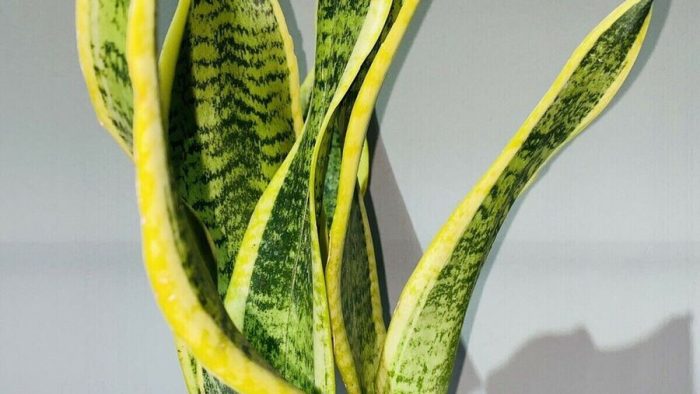
Shafqat Aziz
Are you worried about the alarming levels of air pollution in Dhaka? It would be natural for one to be concerned given the daily news reports of record high levels of air pollution by AQI (Air Quality Index) which often terms it as “hazardous”. While there has been sparring usage of water canons by the respective city corporation trucks to stem the flow of dust particles in the air, it is questionable how effective these measures have been so far.
What about inside your home? The easiest way to get rid of toxins and improve your indoor air quality would be installing an air purifier but given the steep price you will have to pay for them, the lack of replacement filter supply does not make it an affordable consumer grade appliance option (yet) for the majority of the masses.
Nasa conducted a “Clean Air Study” project in 1989 to research if widely available indoor plants could clean the air in airtight environments such as in their missions to space. Through this project, it was found that certain plants could absorb Carbo Dioxide, and through photosynthesis, release oxygen. Furthermore, in this process, the plants could also remove harmful chemicals such as Formaldehyde, Trichloroethylene and Benzene. A total of 12 plants were researched under this project, we shall suggest 3 of them here as they are easily available to purchase in Bangladesh.
Snake Plant (Sansevieria)
The Snake plant looks artificially structured visually and are quite easy to maintain. Snake Plants purify the air in addition to removing harmful toxin substances through photosynthesis. Snake Plants come in different shapes and sizes, from tiny flower shaped snake plants to huge snake plants with intimidating looks, generally snake plants comes in 3 breeds, dark green, light green and green leaves with yellow edges in our local market.
They are easy to maintain given Bangladesh’s naturally humid atmosphere, you will only need to water them once a month on average. These plants thrive on neglect and don’t require a lot of direct or indirect sunlight. Just leave it alone and it will do its work on its own and even grow new offshoots. They also make beautiful sight to just look at given their artificial looking structured leaves. Please note that Snake plants don’t particularly like a lot of direct sunlight or a lot of watering, so the best practice would be to put them in a corner of your room water it down to its roots once a month.
What makes the Snake Plant the best indoor air purifying plant is the fact it is one of the few plants that can produce oxygen even at night, the highest in amount for any indoor houseplant.
Snake plants come in different shapes and sizes, there are a wide variety to choose from.
Dracaena
Dracaenas are also another breed of visually appealing indoor house plants which help purify indoor air. In fact, it may just be the most commonly found indoor houseplant in many households.
Dracaenas don’t grow up much in length, but their leaves grow quite fast. Keep this in mind because one may panic that their Dracaena plant is dying given, they shed their leaves to yellow and fall on their own while newer leaves form on their own. Dracaenas come in 2 variants in our local market: Dark green and Light Green. From my experience, the Light Green Dracaena breed survives more, and their leaves are of better quality.
While Dracaenas don’t need much care, it is good practice to water them once a week or once every two weeks. Additionally, Dracaenas don’t require much sunlight, but some occasional indirect sunlight helps the photosynthesis process as this is a plant that sheds leaves often and grow new ones fast. The photosynthesis part is important as that is the time the plant removes harmful pollutants from the air. However, please do not overwater them or put them in direct sunlight as that will damage the plant.
Spider Plant
The Spider Plant does justice to its name with its many leave branches. Of the 3 plants, this requires the most care. It requires light watering every other day and a lot of direct sunlight so it would be wise to place it near a window or a place which receives a lot of direct sunlight.
It generally grows fast, and sheds leaves fast but more often than not, it’s leaves do show signs of getting brown. But do not worry, your spider plant is not dying, just cut off the yellowing leave parts and they will regrow on their own in a matter of days.
Do note this plant propagates fast and new offshoots form quickly so with one plant you can theoretically end up making a garden of spider plants in about a few months (given they are all well taken care of and adequate fertilizers are used).
Factors that may affect your plant’s health:
- Soil quality: Generally a mix of one third coco peat, one third soil and one third fertilizer would be a good mix for indoor plants.
- Fertilizer: Organic fertilizers would be the best option as they are slow releasing over many months.
- Watering: Do not over water, or underwater plants for too long as they result in root rot and yellowing of the leaves. Severe yellowing might end up killing your plant. This is tricky, only through trial and error can you figure out what is the best balance for each plant.
- Pests: Bugs and microscopic pests may eat away at your plant’s leaves and roots without you even noticing it. In this regard, neem oil helps keep pests and bugs away. Another good option is to use organic neem fertilizers to keep pests away from your plant’s roots.
- Sunlight: Different plants require different exposure to sunlight, too much sunlight may kill your plant, too little sunlight can make your plant lose it’s healthy functioning.
*Please note, all 3 abovementioned plants do purify indoor air of toxins but they cannot achieve, in small numbers the same level of air purification as a consumer grade air purifier can.




